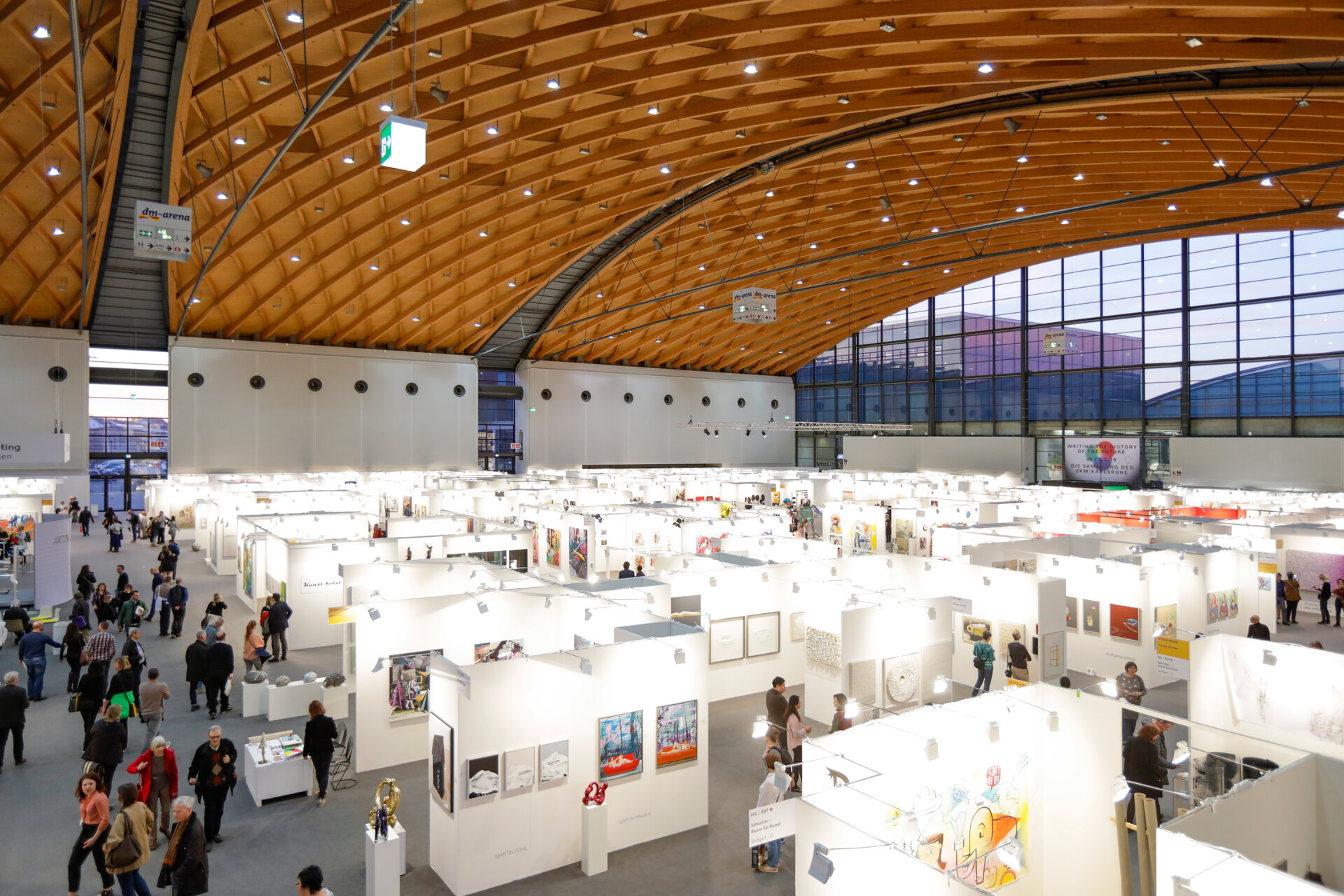
Art Karlsruhe
07.Jul - 10.Jul 2022
At artKARLSRUHE 2022 from July 07-10 in Hall 2 / Booth L23 we present on 100 sqm studio-fresh works by
- Oskar Rink
- Miriam Vlaming
- Leif Trenkler
- Josef Hirhammer
- Alfred Haberpointner
- Constantin Schroeder
- Leszek Skurski
- Casagrande & Recalcati
- Dorothee Liebscher
Here you can find more details about artKARLSRUHE 2022.
We are looking forward to your visit at our booth!
Alfred Haberpointner
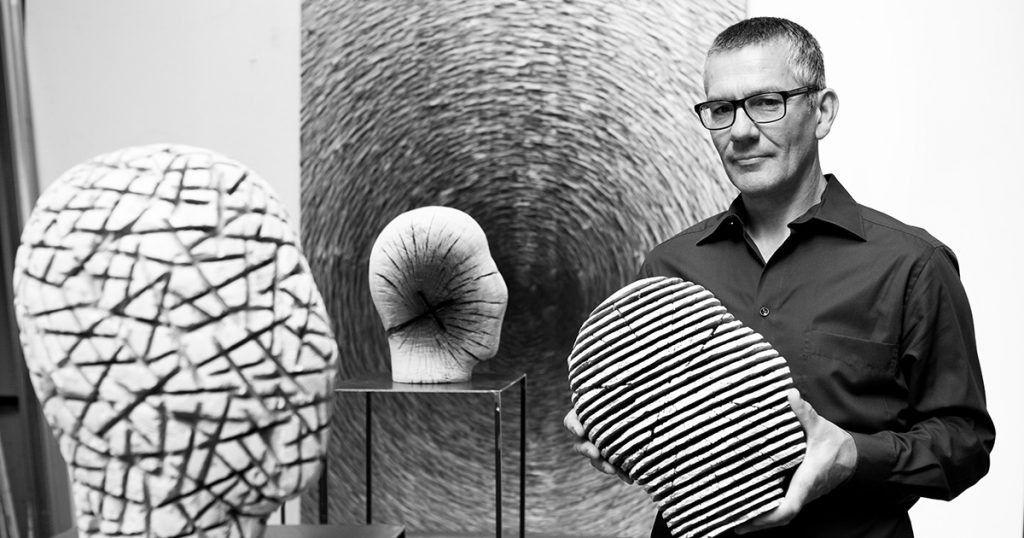
Salzburg-born sculptor Alfred Haberpointner creates wooden sculptures that oscillate between an abstract, geometric form and a figurative image. With his work series spanning over the last two decades, Haberpointner proves how he has innovatively dealt with wooden materials and freed himself from the roots of craft-based, naturalistic wooden sculpture. In his "chopped images," he gives the wooden material an intense presence through systematic, rhythmic sections, which emerge through close observation and exploration of the textured surfaces and result in a dance between light and shadow. He is concerned with form in his works, particularly in the treatment of wood in all possible nuances and shadings. In each of his artworks, one can see the traces of the work process: Haberpointner subjects his reliefs and sculptures to a powerful, mechanical work process that leaves traces on the works. Through beating, chopping, and burning, textures emerge that give the works a relief-like surface, which lacks any mathematical precision and exudes a special aura. Alfred Haberpointner is represented in major art collections, such as the Würth Collection.
To the artist page
Constantin Schroeder
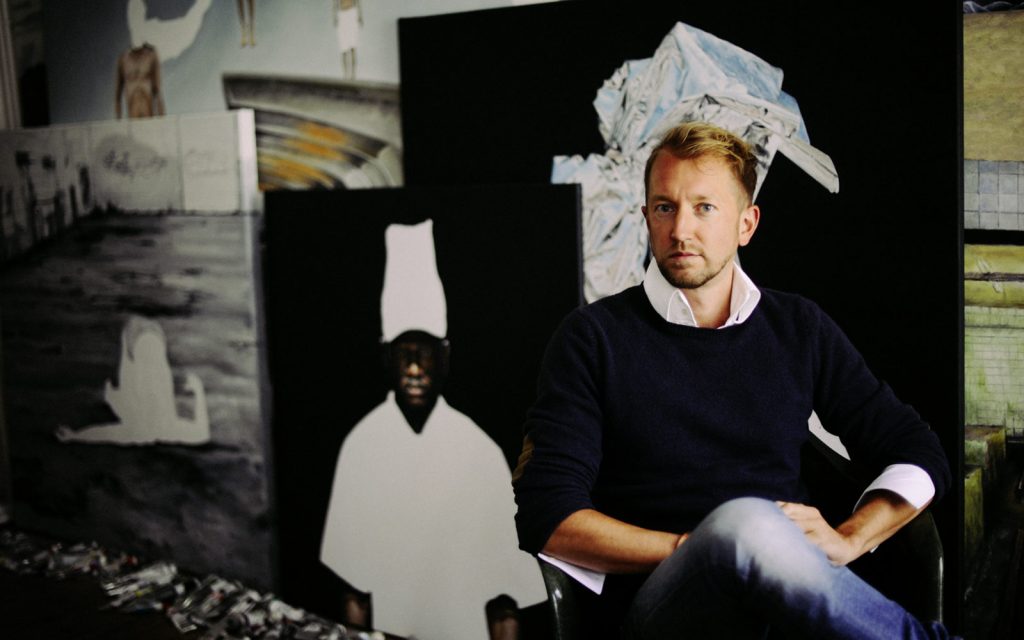
Constantin Schroeder's figurative paintings are impressive, moving images with a profound sense of depth. His pictorial protagonists are fascinating characters that never let us go. Internalizing the present with all its complexities, he uses a very reduced color palette. Mostly executed in large formats, the scenes captivate the viewer with their characteristic narratives. Schroeder reaches deep into the archive of the human psyche. His works reveal an enigmatic iconography, which includes young heroes posing interpersonal mysteries. The artist, who lives and works in Berlin and studied theology, philosophy, and art history, also illuminates the darker sides of life in an extraordinary, hyper-realistic style. These are powerful images that captivate us with their enigmatic pictorial content. Schroeder leaves some parts of the image white, which allows the viewer to develop his or her own interpretation and understanding of the image through open associations.
To the artist page
Dorothee Liebscher
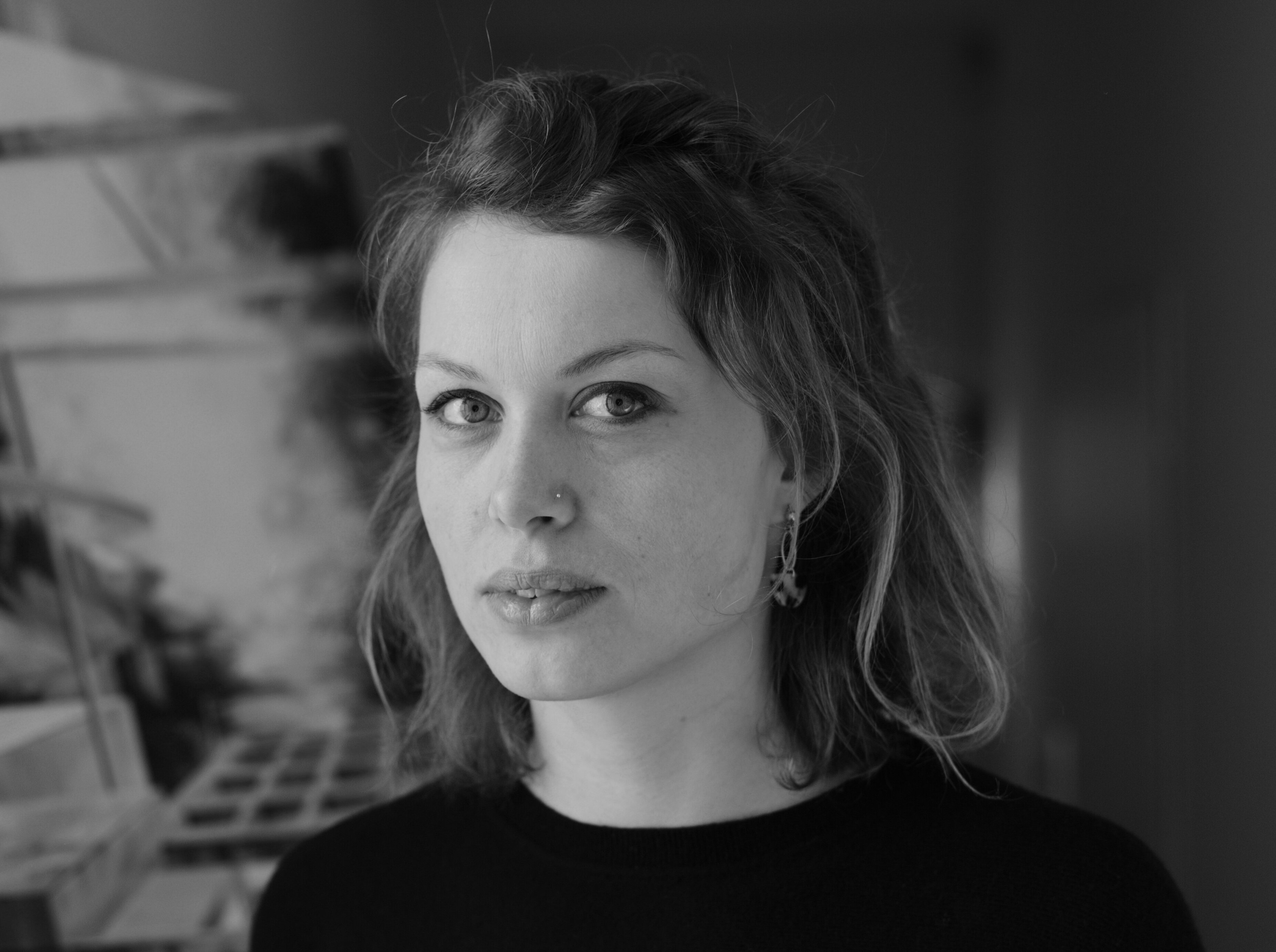
Dorothee Liebscher's paintings depict imaginary views of architectural and landscape spaces, which often portray run-down, abandoned buildings, partly overgrown by vegetation. For the artist, who lives and works in Leipzig, the investigation into spatial themes holds central significance. The viewer adopts the image protagonist role and experiences the architectural structures. Insinuated landscape views, as well as a deep horizon, convey a great sense of depth. This results in thoughtfully constructed spaces that interpret reality subjectively and reveal to the viewer a hidden world that always offers new mysteries and raises questions. The paintings feature a specific color palette and exist in a field of tension between nostalgia and utopia. Partially surreal pictorial worlds emerge on the canvas. Through the intertwining of reality, memory, and fiction, spatial compositions emerge that invite the viewer to embark on his or her own exploration of an unfamiliar, yet at the same time seemingly familiar world.
To the artist page
Josef Hirthammer
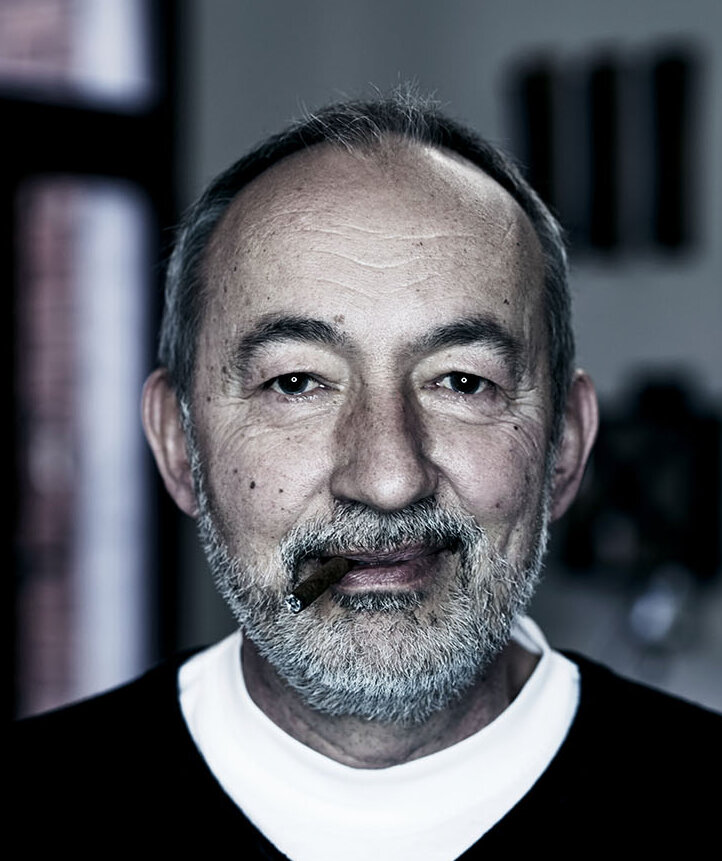
Josef Hirthammer has been working as a visual artist for over 40 years. His œuvre is extremely complex and defies categorization. The broad artistic range is reflected in the different design mediums, such as painting, drawing, photography, digital painting, sculpture, and installations. In terms of content, Josef Hirthammer focuses on portraits as well as ecological and philosophical themes, which he approaches through his work series. He is an outspoken nature enthusiast who transforms his encounters with nature into art objects. He is primarily interested in the producing, generating, creative, and active nature, which becomes effective from itself and which in the philosophical tradition has been equated with the source of all finite things. The artist, who lives and works in Fürth, views nature as a macro- and microcosm of its own with a unique aesthetic. This way of thinking provides him with inspiration for his works of art.
To the artist page
Leif Trenkler
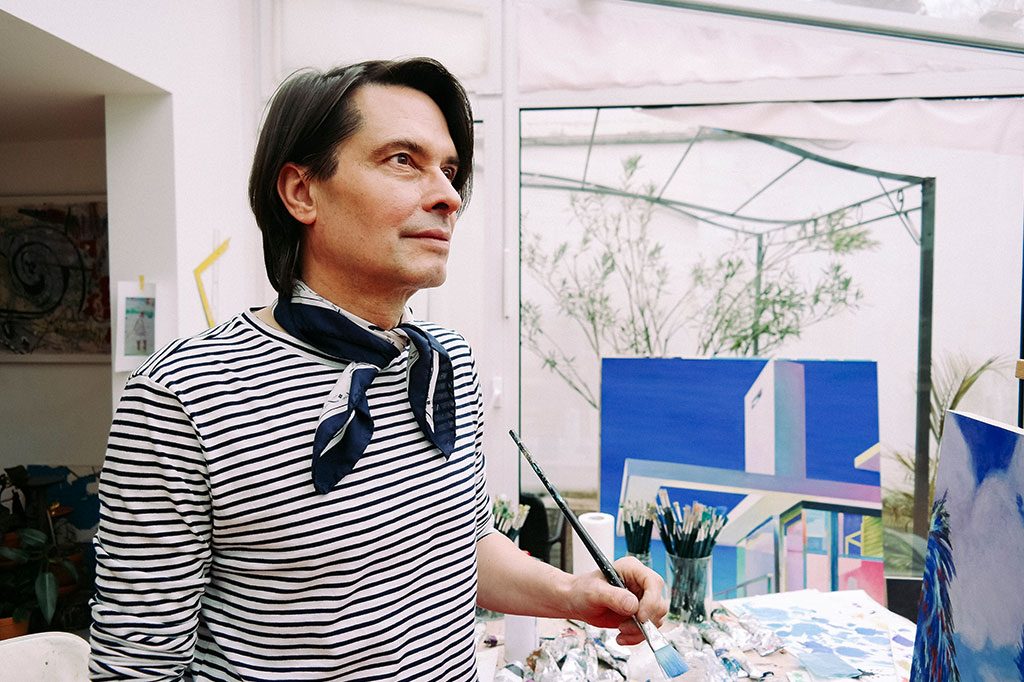
Leif Trenker, a graduate of the Städelschule in Frankfurt, is considered an important initiator of the New Figuration movement in Germany. In his works, which oscillate between realism and surrealism, the artist, who lives and works in Cologne, examines the effect of light and shadow on architecture, landscapes, and figures. There is deliberately no clear differentiation between fiction and reality, which becomes evident in the expressive and intentionally overdriven use of color in his pictorial worlds. Thus, through a poetic sense of reverie, he disrupts the ordinary, architectural, or natural space and draws in an exciting, fantastical dimension, where the mere visual quality fascinates and at the same time represents his unique style. His paintings on birch wood are instantaneous moments, where figures are mostly depicted in the foreground. Thematically, his work focuses on childhood memories, street and nature views, and scenes of everyday life and parties.
To the artist page
Leszek Skurski
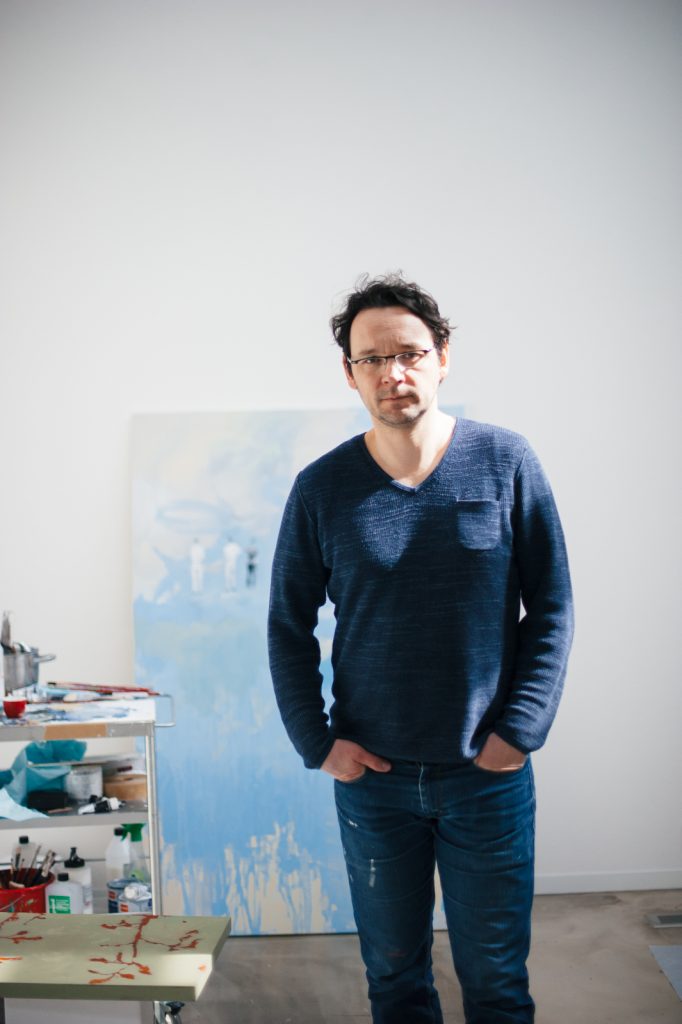
A vast, seemingly infinite plain forms the foundation for the scene: As if from nowhere, people appear on the surface of the image. They emerge from layers rich in nuances of light white or hazy gray, leaving plenty of room for interpretation. The artist Leszek Skurski, who is a native of Poland, repeatedly devotes his paintings to figurative storytelling. In his works, he depicts many stories, that remain open-ended and allow the most diverse interpretations. They are paintings depicting narratives that seem to have paused or stopped in action, and Skurski captures these forms with a narrative density. Many evanescent moments of our existence and interactions are captured on the canvas like excerpts or snapshots between their occurrence and disappearance. Hence, the images of the artist, who lives and works in Fulda, are reminiscent of film stills or still images that outline a content, character, or mood.
To the artist page
Miriam Vlaming
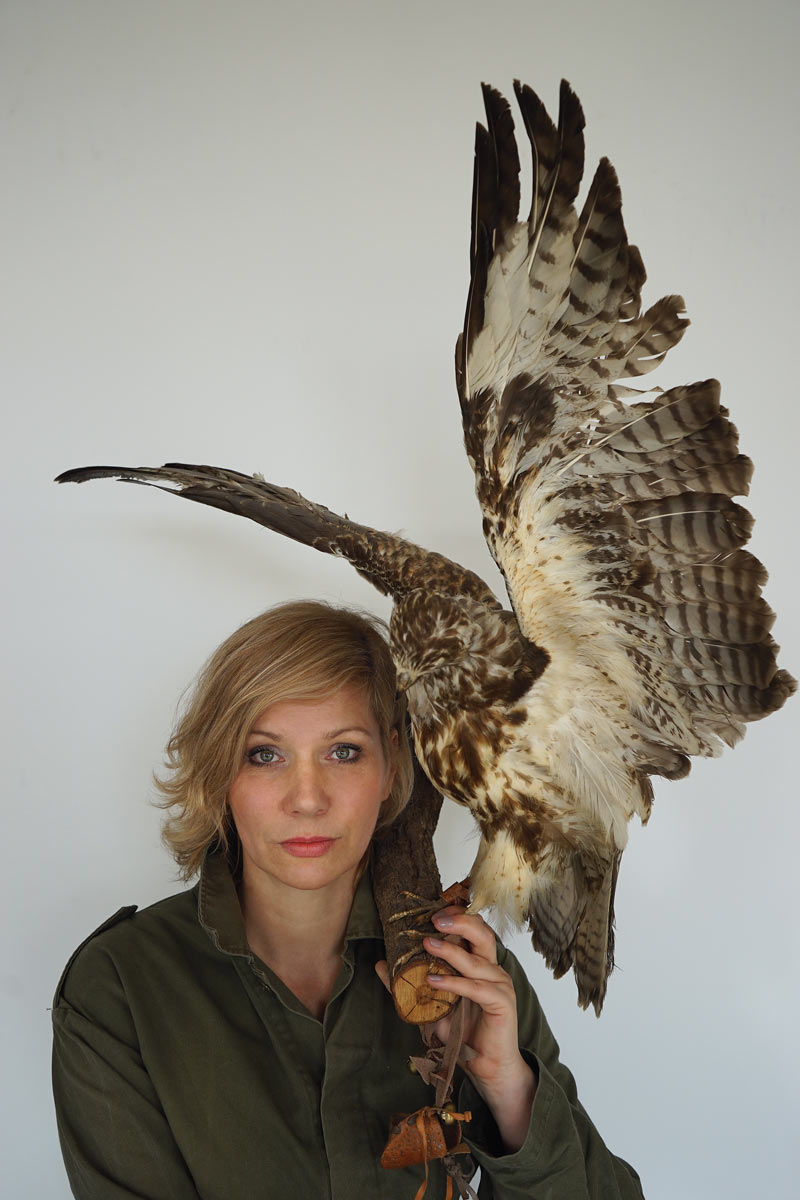
In Miriam Vlaming's large-scale paintings in egg tempera, the painter breaks down the boundaries between man and nature as well as past and reality. She creates a harmonious symbiosis between these supposed opposites through hazy layers created by the application and removal of paint. In doing so, she allows the depicted figures to emerge from a natural, dreamlike environment. Through this aesthetic, Vlaming opens the viewer's eyes to the multifaceted aspects and philosophical questions of being human, which she addresses in her paintings. Miriam Vlaming always has the overall picture in mind in her mysterious pictorial worlds. She plays with ambiguous metaphors. “Disruptions and contradictions interest me ... the moment after or before something has happened...not the history." Her egg tempera paintings satisfy a deep human need for knowledge. The important member of the New Leipzig School studied at times with Neo Rauch. She was a master’s student under the direction of Arno Rink and is represented in numerous public and private collections.
To the artist page